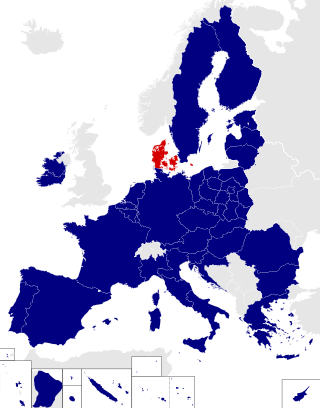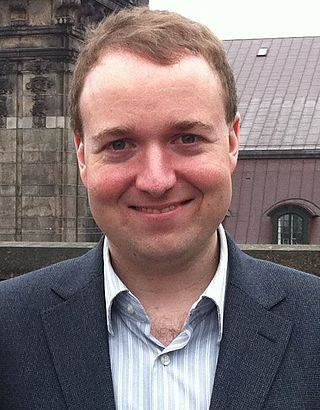The politics of Greenland, an autonomous country within the Kingdom of Denmark, function in a framework of a parliamentary representative democratic dependency, whereby the prime minister is the head of government, and of a multi-party system. Executive power is exercised by the government. Legislative power is vested in both the government and parliament Inatsisartut. The judiciary is independent of the executive and the legislature. Greenland has full autonomy on most matters, except on policies and decisions affecting the region including negotiations with the devolved legislatures and the Folketing.

Siumut is a political party in Greenland in the social democratic tradition. Since the establishment of home rule in 1979, it has been the dominant party in Greenland. Siumut is led by Erik Jensen, who beat the then-incumbent Prime Minister Kim Kielsen in a tight leadership contest in late 2020.

The Inatsisartut, also known as the Parliament of Greenland in English, is the unicameral parliament of Greenland, an autonomous territory in the Danish realm. Established in 1979, it meets in Inatsisartut, on the islet of Nuuk Center in central Nuuk.

There are three types of elections in Denmark: elections to the national parliament, local elections, and elections to the European Parliament. Referendums may also be called to consult the Danish citizenry directly on an issue of national concern.

Inuit Ataqatigiit is a democratic socialist, separatist political party in Greenland that aims to make Greenland an independent state. The party, founded as a political organisation in 1976, was born out of the increased youth radicalism in Denmark during the 1970s. Traditionally in favour of a socialist economy, the party has been criticised from the left of having gradually moved towards a capitalist approach, supporting a market economy and privatisation. Inuit Ataqatigiit believes that an independent Greenland should be competitive while fighting to keep the environment clean.
Greenland elects on national level a legislature. The Greenlandic Parliament has 31 members of parliament, elected for a four-year term by proportional representation. Greenland has a multi-party system, with numerous parties in which a single party normally does not have a chance of gaining power alone, and therefore the parties must work together in order to form a coalition government.

Greenland, an autonomous territory within the Kingdom of Denmark is one of the EU members’ overseas countries and territories (OCT) associated to the European Union. Greenland receives funding from the EU for sustainable development and has signed agreements increasing cooperation with the EU.

The 1984 European Parliament election was the first since the inaugural election of 1979 and the 1981 enlargement of the European Community to include Greece. It was also the last before the accession of Spain and Portugal in 1986.

Denmark is a European Parliament constituency for elections in the European Union covering the member state of Denmark, but not other parts of the Danish Realm such as the Faroe Islands or Greenland, which are not part of the EU. It is currently represented by fourteen Members of the European Parliament. Denmark uses the D'Hondt method of proportional representation. Electoral coalitions between two or more parties are allowed.
European Parliament elections were held in Denmark between 7 and 10 June 1979 to elect the 15 Danish members of the European Parliament. Elections were held separately in Greenland to elect one Greenlandic member.
European Parliament elections were held in Denmark on 14 June 1984 to elect the 15 Danish members of the European Parliament. Elections were held separately in Greenland to elect one Greenlandic member.

Greenland was a European Parliament constituency for elections in the European Union covering the territory of Greenland. It seceded from the European Community in 1985. It was represented by one Member of the European Parliament.

Jeppe Sebastian Kofod is a former Danish politician of the Social Democratic Party who served as Minister of Foreign Affairs of Denmark between 27 June 2019 to 15 December 2022.
A referendum on continued membership of the European Communities (EC) was held in Greenland on 23 February 1982.

Michael Aastrup Jensen is a Danish politician, who is a member of the Folketing for the Venstre political party. He was elected into parliament at the 2005 Danish general election.

After being a part of the European Communities (EC) for twelve years, Greenland withdrew in 1985. It had joined the EC in 1973 as a county of Denmark, even though a majority in Greenland was against joining. In a consultative referendum in 1982, 53% of the electorate of Greenland voted to withdraw from the Communities. This latter referendum became possible after the introduction of home rule in Greenland in 1979. Following its withdrawal, which was regulated through the Greenland Treaty, the relationship between Greenland and the EC was partly settled through an association under Overseas Countries and territories (OCT) status. In recent years, the Greenlandic withdrawal from the European Communities has marginally been referred to as "Greenxit".
The 1979 European Parliament election in Greenland was the election of the delegation from the constituent country Greenland of the Kingdom of Denmark to the European Parliament in 1979.

The High Commission of Denmark in Greenland is a Danish institution in Greenland.

Greenland is one of the 12 multi-member constituencies of the Folketing, the national legislature of the Kingdom of Denmark. The constituency was established in 1975 following the merger of the two constituencies that covered Greenland. The constituency currently elects two of the 179 members of the Folketing using the open party-list proportional representation electoral system. At the 2022 general election it had 41,305 registered electors.











